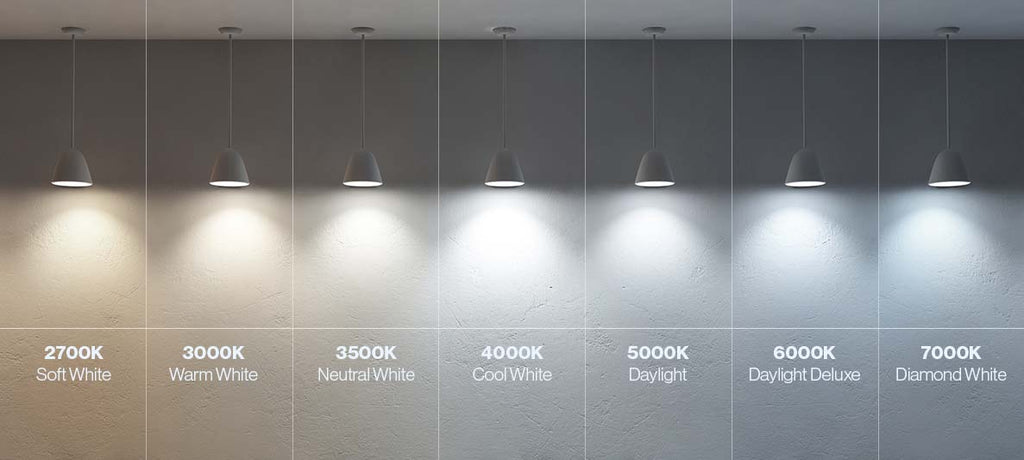How does a Yellow Bug Light Work to Keep Bugs Away?
You are probably familiar with the phrase “like a moth to a flame,” but did you know that a brief understanding of a flying insects’ attraction to light can help you with your pest management? Sunco Lighting LED Yellow Bug Lights offer a simple and appealing solution to deterring bugs at doorways and near outdoor dining areas without the use of harmful chemicals.
To be clear, these yellow bug bulbs are not a pesticide or one of those annoying bug zappers. They do not eliminate bugs. They deter them. We will uncover how that works in this blog.
Are bugs less attracted to yellow light bulbs than blue light bulbs?
The simple answer is yes. Insects see a smaller portion of the Visible Light Spectrum than humans. Humans can see the entire Visible Light Spectrum (~380-750nm), but not the full UV light spectrum. (You can learn more about Understanding the Visible Light Spectrum and Color in our blog post.)

As you can see above, bugs perceive wavelengths of light from approximately 300 to 650 nanometers. They do not see the warmer colors beyond yellow wavelengths and are therefore not as attracted to yellow-orange LED light bulbs (compared to blue light bulbs or fluorescent lights), because they cannot see them as those colors are on the edge of a bug’s range of vision.
When light transmission wavelengths are greater than 550 nm, like the sunset-like range of deep yellow to orange-red, the sensitivity of a bug’s range of vision can come into play. Wavelengths higher than 550 nm can affect phototactic response per scientific studies of moth behavior. Don’t worry, we won't do a deep dive into science.
Phototaxis deals with light stimulus. Here are two ways bugs are affected by light stimulus (there are many others):
- Positive Phototaxis – attraction/movement to a light source
- Negative Phototaxis – movement away from a light source
You can discourage attraction to your exterior light bulbs above a patio table or other dining space, where you might relax in the evenings outside, by using a warm light quality LED that is outside the range of vision of most flying insects. A sunset-like or yellow-orange bulb, like our A15 LED Yellow Bug Light Bulb can attract less bugs than a blue light bulb might do.
Bugs like moths or flies are drawn to certain types of lights not only because their light wavelengths are visible within a bug’s range of vision, but also bugs are affected by generated heat and the emission of UV light.
Are bugs attracted to UV lights? What about heat?
We’ve established that bugs can see a portion of UV light (300-400 nn range). The full UV light spectrum (400-10 nm) sits outside the Visible Light Spectrum. Its short wavelengths are not visible to humans.
You can see an insect’s attraction or positive phototaxis towards UV light in action in the real world. A moth or fly inside a building tends to hover near windows during the daylight hours. That’s because flying insects are attracted to the UV radiation from the sun.
LED light bulbs emit nominal or no UV light whereas incandescent bulbs will emit UV light. Flying bugs would be more attracted to an incandescent bulb and less attracted to an LED light bulb, even if those bulbs were the same brightness and color temperature. This physical attraction to UV isn’t the only draw, there is also heat involved in the moth drawn to the flame, or in this case the light bulb.
Incandescent bulbs convert only 10% of their energy into the production of light. The rest – 90% - is emitted as heat. CFLs emit 80% of their energy as heat. LED lights emit only a small amount of heat by comparison. It’s one of the reasons LEDs are more efficient.
Other Benefits of Yellow Light vs. Blue Light
The yellow tone of our A15 LED Yellow Light Bulb has additional benefits outside the realm of deterring insects. The warmer color produced by this light bulb can help promote your body’s natural sleep cycle and the release of melatonin when used at the end of the day. It simulates sunset to tap into your human circadian clock. It won’t boost alertness like the blue light emitted from TV screens, computer monitors, and technical devices.
It can also be used as a comfort night light in a child’s bedroom or a nursery.
Sunco Lighting offers two LED bug light bulbs:
A15 LED Bulb Yellow Bug Light
- compact indoor or porch light (it’s damp rated)
- anti-bug light
- low-blue comfort light or night light
- 8W=40W with the same 600 lumens of brightness as an equivalent, higher wattage incandescent or halogen lamp
- dimmable (find the compatible dimmer list here)
A19 LED Bulb, Yellow Bug Light, Dusk to Dawn
- designed for use at night
- porch light or wall light bulb (it’s damp rated)
- automated with included Dusk to Dawn Sensor (That means at night the bulb is ON. During the day the bulb is OFF.)
- anti-bug light
- 9W=40W with the same 480 lumens of brightness as an equivalent, higher wattage incandescent or halogen lamp
If you want to learn more about moisture ratings and what “damp” or “wet rated” lights mean, check out our blog: Choosing LED Damp vs. Wet Rated Lights.
2 comments
-
Posted on by MichaelWill you ever produce a T9 amber or warm light bulb for these bugs because I’m tired of my doorbell camera going off CONSTANTLY…
-
Posted on by Randall HelgesonThen why are insect sticky traps always yellow?


